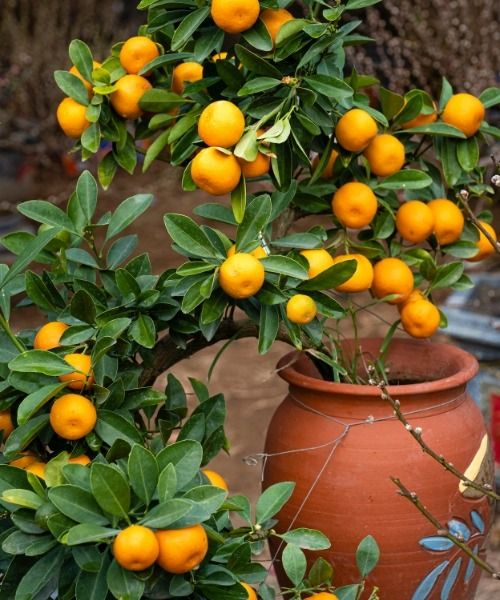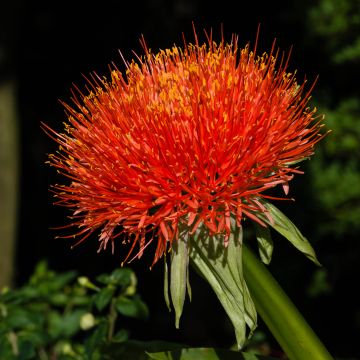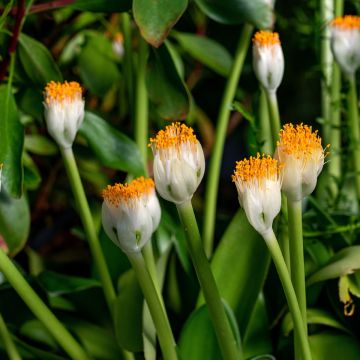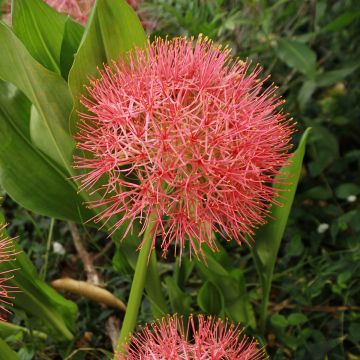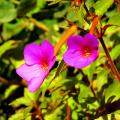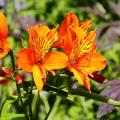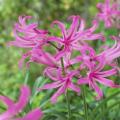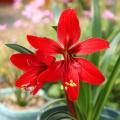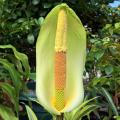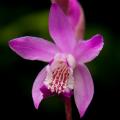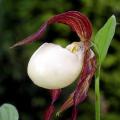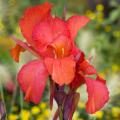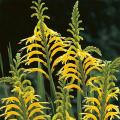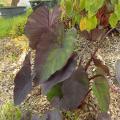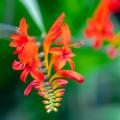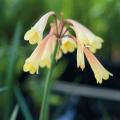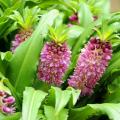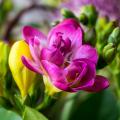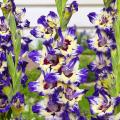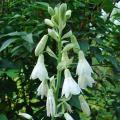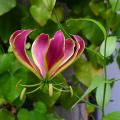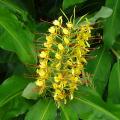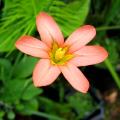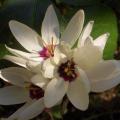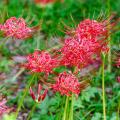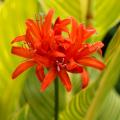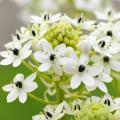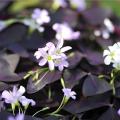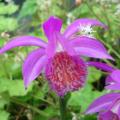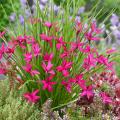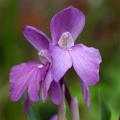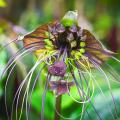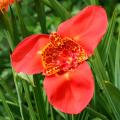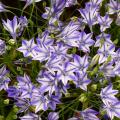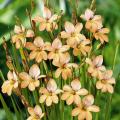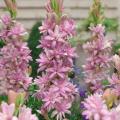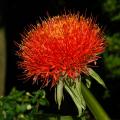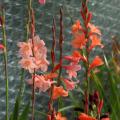Scadoxus
Would this plant suit my garden? Set up your Plantfit profile →
Available in 1 sizes
Available in 1 sizes
Available in 1 sizes
Scadoxus are native to Africa. We will mainly focus on Scadoxus multiflorus subsp. multiflorus, a subspecies that can be found in the wild over a very large territory: from the tropical zones of central Africa to the Arabian Peninsula. Only 3 species have been introduced into our gardens. They all come from the temperate zones of South Africa: Scadoxus multiflorus, Scadoxus membranaceous, and Scadoxus puniceus.
Scadoxus are rhizomatous or bulbous perennials in the case of species from cooler areas. The leaves are flexible and lanceolate or ovate. They are arranged in a spiral, which forms a sort of pseudo stem, a stalk, or a basal clump. The foliage is deciduous and flowering begins in spring before the leaves appear and continues until mid-summer. This flowering consists of a spherical umbel composed sometimes of a hundred red or orange flowers. Afterwards, a pulpy red berry appears; it is toxic, but birds love it.
Scadoxus from temperate regions are moderately hardy: down to -5°C (23°F). They are planted in full sun in well-drained soil and protected from severe frost. They are very easy to grow if you provide them with warmth and humidity throughout their flowering period.
But they can also be cultivated in pots at home or in a cold greenhouse for many years.
Haven't found what you were looking for?

































